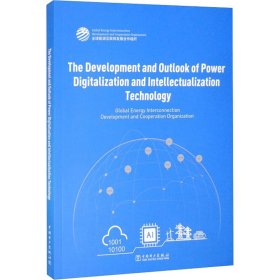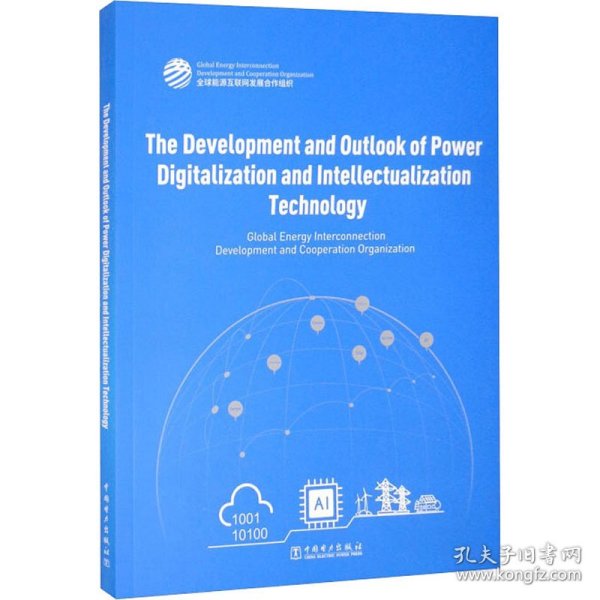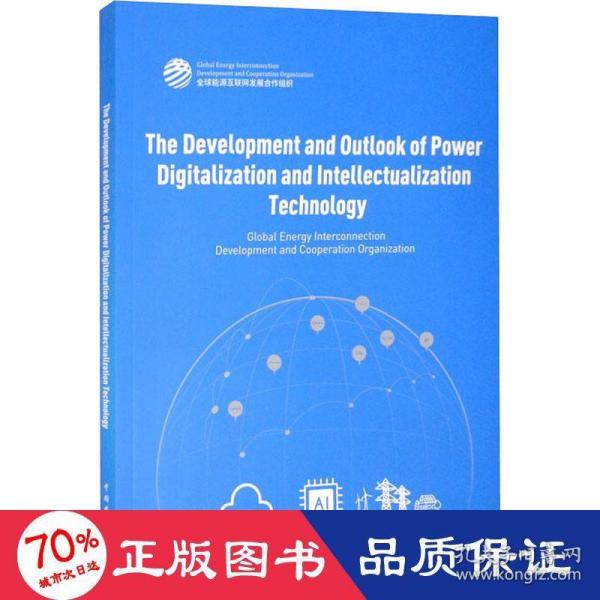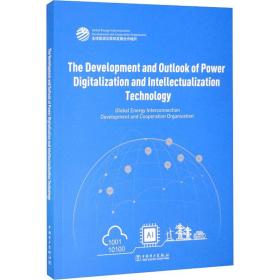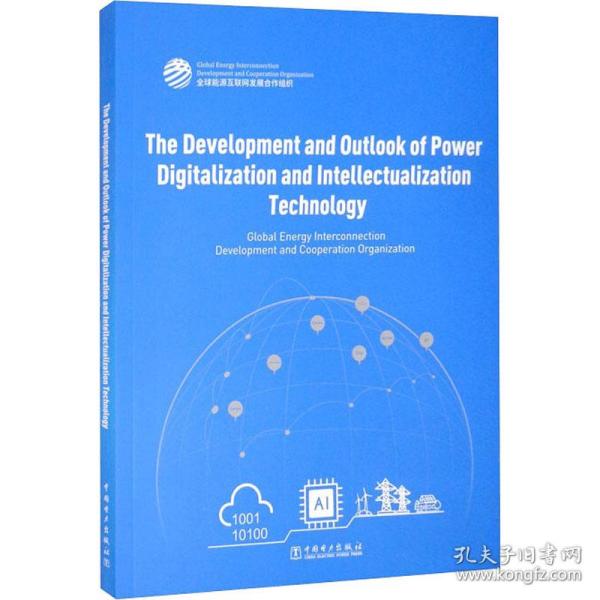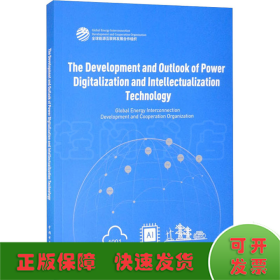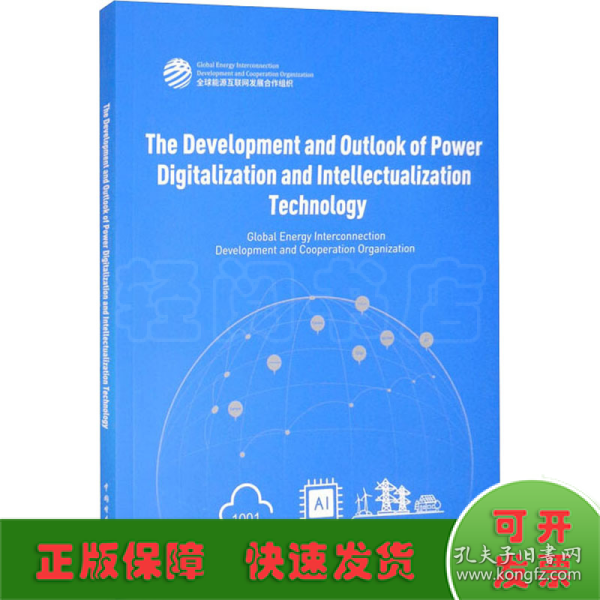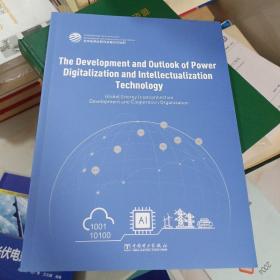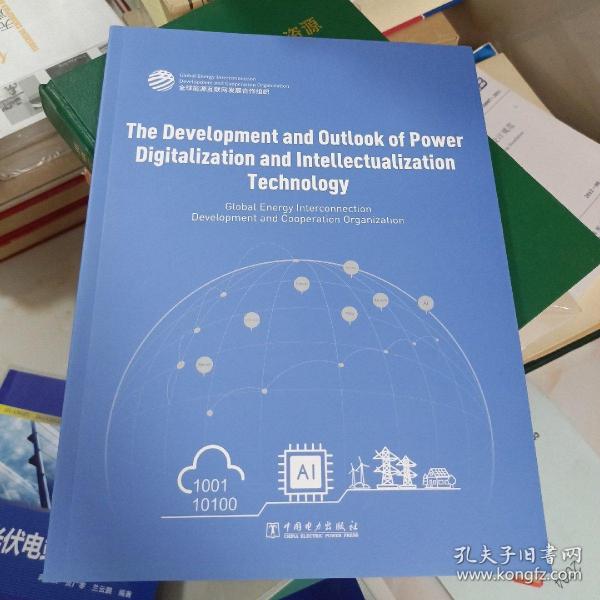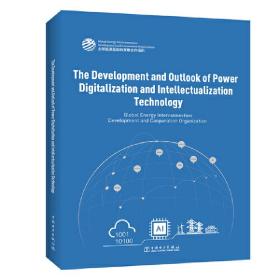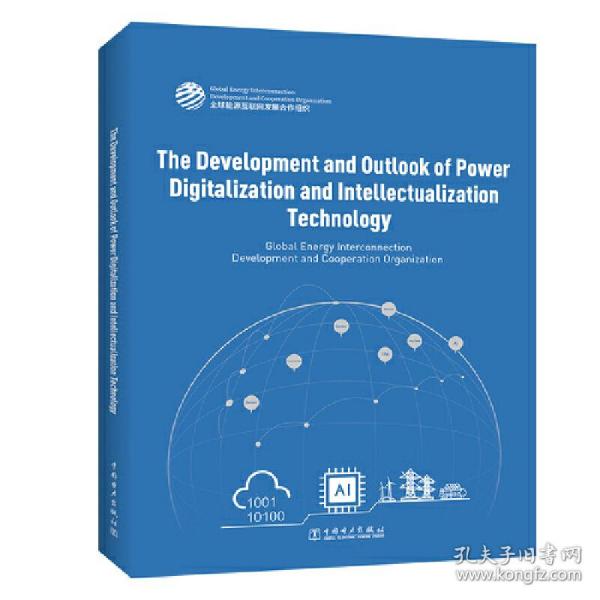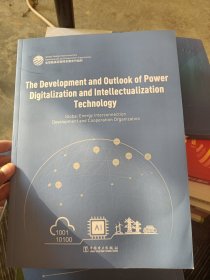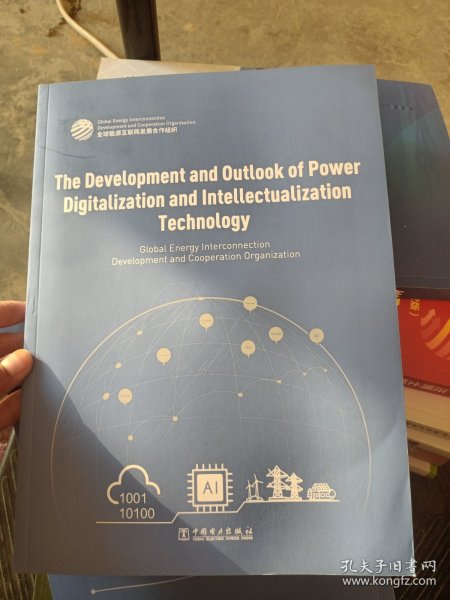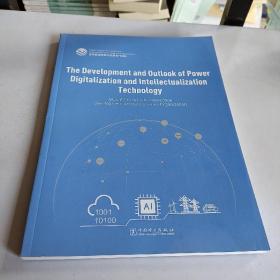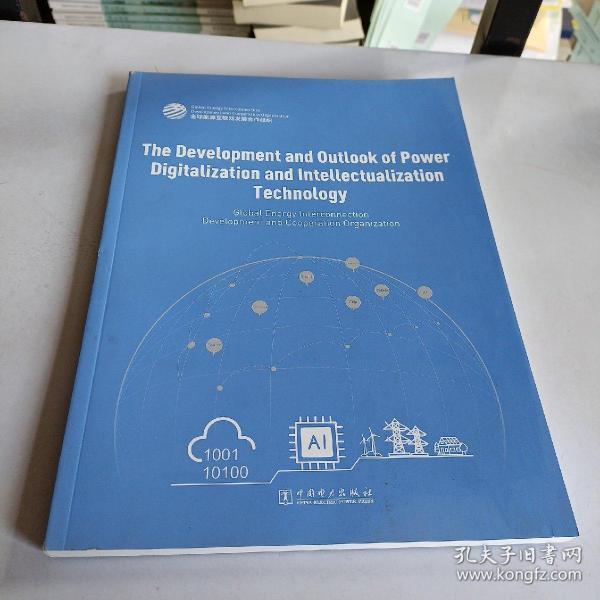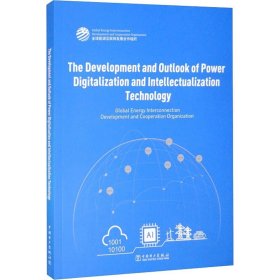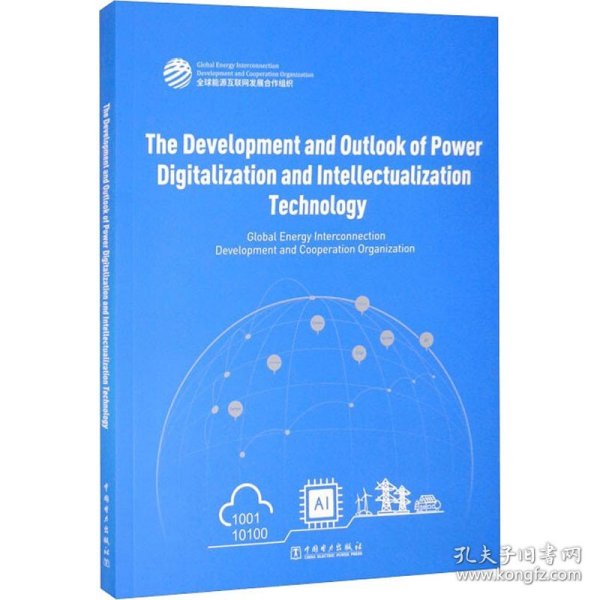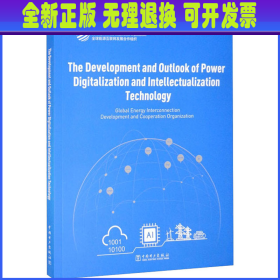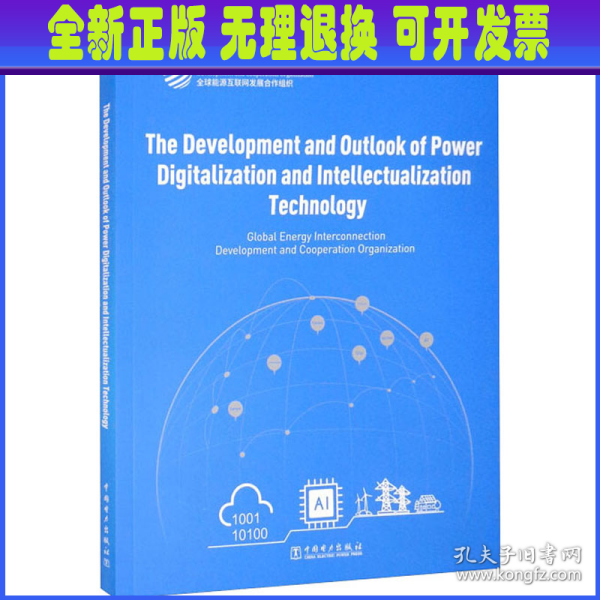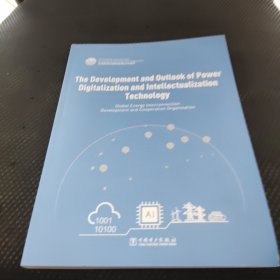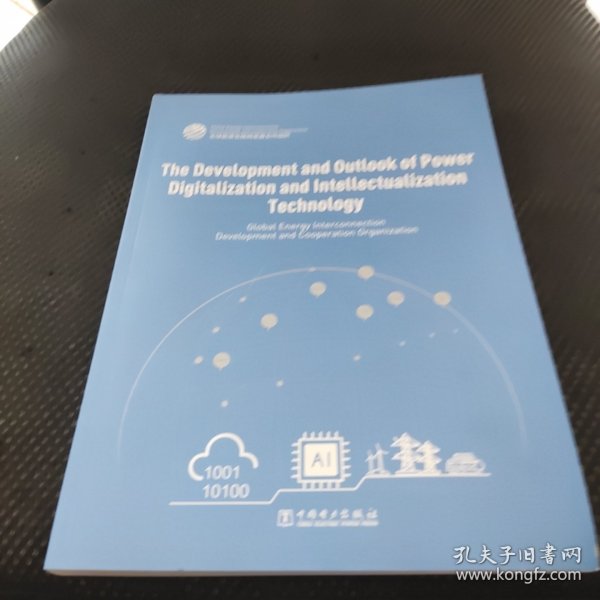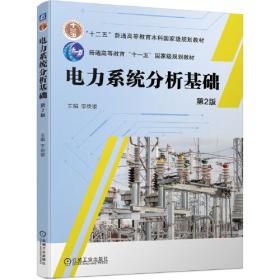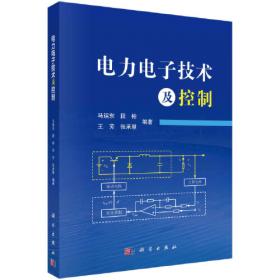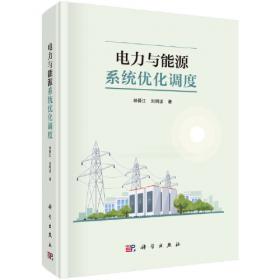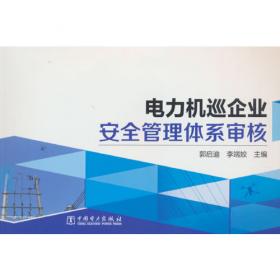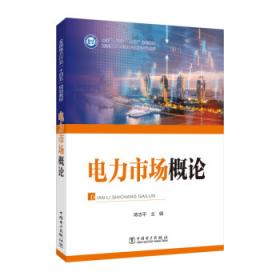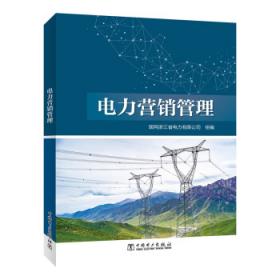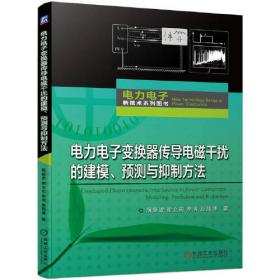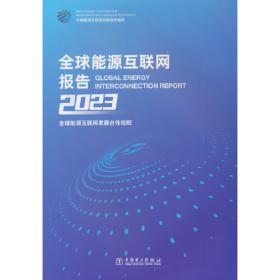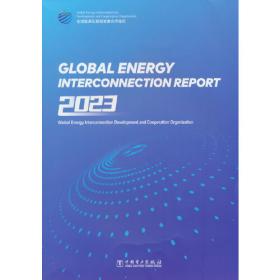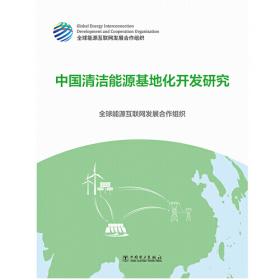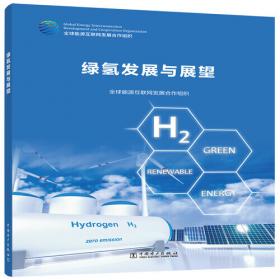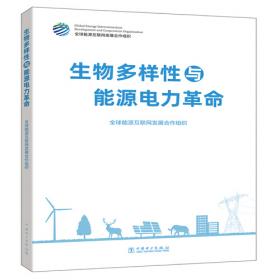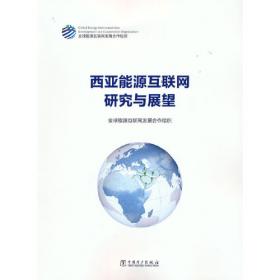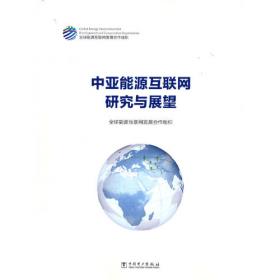电力数字智能技术发展与展望(英文版)
出版时间:
2021-10
版次:
1
ISBN:
9787519859398
定价:
280.00
装帧:
平装
页数:
240页
字数:
459.000千字
-
本报告是《电力数字智能技术发展与展望》的英文版。
本报告立足电力数字智能技术的功能定位及发展需求,从技术视角分析了主要关键技术的发展现状、主要应用和研发方向,并就数字智能技术对电力系统、电力企业、能源产业生态的潜在价值进行了评估。报告分为8章,第1章数字智能技术发展现状与电力领域的转型需求出发,分析提出电力数字智能技术的发展目标与定位;第2至7章,分别研究了传感技术、通信技术、控制技术、芯片技术、大数据与区块链、人工智能等6项关键技术;第8章总结了关键技术发展趋势,分别从新型电力系统构建、智能企业创新管理、“能源+信息+”产业融合发展、电力大数据赋能等4个方面,展望和描绘了电力数字智能技术高度发达的十大典型情景。 全球能源互联网发展合作组织(简称合作组织),是由致力于推动世界能源可持续发展的相关企业、组织、机构和个人等自愿组成的国际组织。注册地设在北京。合作组织的宗旨是推动构建全球能源互联网,以清洁和绿色方式满足全球电力需求,推动实现联合国“人人享有可持续能源”和应对气候变化目标,服务人类社会可持续发展。合作组织将积极推广全球能源互联网理念,组织制定全球能源互联网发展规划,建立技术标准体系,开展联合技术创新、重大问题研究和国际交流合作,推动工程项目实施,提供咨询服务,引领全球能源互联网发展。? PREFACE
SUMMARY
1 Development Status and Trend?001
1.1 Development Status?002
1.1.1 DI Technologies Leading Social Change?002
1.1.2 DI Technologies are Widely Used in the Power Sector?003
1.1.3 Electric Power Development Promotes the Progress of DI Technologies?003
1.2 Situations and Requirements?004
1.2.1 Requirements for Establishing a New Power System?004
1.2.2 Requirements for Building a Smart Operation System?005
1.2.3 Requirements for Collaborative and Integrated Industry Development?006
1.3 Target Orientation?006
1.3.1 Smart Upgrade of Power System?007
1.3.2 Construction of Energy Interconnection Ecology?008
1.4 Key Technologies?009
1.4.1 Accurate Sensing Sensor (Measure) Technology?009
1.4.2 Information Transmission Communication Technology?009
1.4.3 Stable Operation Control (Protection) Technology?010
1.4.4 Core Element Chip Technology?010
1.4.5 Data Platform Big Data and Blockchain?010
1.4.6 Decision Support Artificial Intelligence?011
1.5 Summary?011
2 Sensor (Measure) Technology?013
2.1 Current Technical Status?014
2.1.1 History of Development?014
2.1.2 Current Application?015
_x005f 2.2 Main Applications?021
2.2.1 Measurement of Core Electrical Quantities?021
2.2.2 Sensing of Operating Status of Power Generation Device?022
2.2.3 Sensing of Operating Status of Power Transmission Line?025
2.2.4 Sensing of Operating Status of Transformer Equipment?027
2.2.5 Sensing of Operating Status of Power Distribution Device?031
2.2.6 Sensing of Operating Status for Electrical Load?033
2.3 Key Technologies?034
2.3.1 MEMS Sensor Technology?034
2.3.2 Optical Fiber Sensor Technology?036
2.3.3 Networking Technology for Sensors?038
2.3.4 Selfenergy Extraction Technology?039
2.4 R&D Direction?041
2.4.1 Lowcost Integration?041
2.4.2 Builtin Antiinterference Capability?042
2.4.3 Multinode Ad Hoc Network?042
2.4.4 Low Energy Consumption in Selfenergy Extraction?043
2.5 Summary?044
3 Communication Technology?045
3.1 Current Technical Status?046
3.1.1 History of Development?046
3.1.2 Current Application?049
3.2 Main Applications?050
3.2.1 Communication inside Power Generation Plant?050
3.2.2 Power Communication Network?051
3.2.3 Communication on User Side?055
3.3 Key Technologies?057
3.3.1 Carrier Communication?057
3.3.2 Optical Fiber Communication?059
3.3.3 Microwave Communication?063
3.3.4 Satellite Communication?064
3.3.5 Bus Communication?066
3.4 R&D Direction?067
3.4.1 Larger Capacity?067
3.4.2 Wider Coverage?068
3.4.3 Lower Delay?069
3.4.4 Higher Security?071
3.5 Summary?072
4 Control (Protection) Technology?073
4.1 Current Technical Status?074
4.1.1 Stage of Classical Control Theory?074
4.1.2 Stage of Modern Control Theory?076
4.1.3 Stage of Intelligent Control Theory?078
4.1.4 Development History of Protection Technology?079
4.2 Main Applications?079
4.2.1 Power Plant Control System?080
4.2.2 Power Grid Dispatching Control?082
4.2.3 Integrated Substation Automation?087
4.2.4 Power Demand Control?089
4.3 Key Technologies?090
4.3.1 Classical Control?090
4.3.2 Linear System Control?091
4.3.3 Nonlinear System Control?094
4.3.4 System Identification?097
4.3.5 Fuzzy Logic Control?098
4.3.6 Neural Network Control?099
4.3.7 Expert Control?100
4.3.8 Genetic Algorithm?100
4.3.9 Wide Area Protection?101
4.4 R&D Direction?102
4.4.1 Stochastic Optimal Control?103
4.4.2 MeasurementIdentificationControl Technology?104
4.4.3 Wide Area Control Technology?104
4.4.4 Collaborative Technology Between Protection and Control?107
4.4.5 System Protection?107
4.5 Summary?108
5 Chip Technology?111
5.1 Current Technical Status?112
5.1.1 History of Development?112
5.1.2 Current Application?115
5.2 Main Applications?120
5.2.1 Smart Meter?121
5.2.2 Power Communication?122
5.2.3 Electricity Safety?123
5.2.4 Asset Management?124
5.2.5 Equipment Status Monitoring?125
5.3 Key Technologies?125
5.3.1 Low Power Consumption?126
5.3.2 Design for Reliability?129
5.3.3 Electromagnetic Protection?131
5.3.4 Design for Testability?133
5.3.5 Thermal Simulation?135
5.4 R&D Direction?138
5.4.1 Sensor Chips?138
5.4.2 Communication Chips?139
5.4.3 Main Control Chip?140
5.4.4 Secure Chip?140
5.4.5 Radio Frequency Identification Chip?140
5.5 Summary?141
6 Big Data and Blockchain Technology?143
6.1 Current Technical Status?144
6.1.1 History of Development?144
6.1.2 Current Application?146
6.2 Main Applications?149
6.2.1 System Operation?149
6.2.2 Corporate Governance?151
6.2.3 Market Analysis?152
6.2.4 Predictive Study?153
6.2.5 Market Transactions?154
6.3 Key Technologies?155
6.3.1 Integration of MultiSource Data?155
6.3.2 Analysis and Mining?156
6.3.3 Distributed Storage?157
6.3.4 Parallel Computing?158
6.3.5 Visualization?158
6.3.6 Consensus Algorithm?159
6.3.7 Asymmetric Cryptographic Algorithm?160
6.3.8 Peertopeer Network Technology?160
6.3.9 Smart Contract?161
6.3.10 Other Data Processing Techniques?161
6.4 R&D Direction?163
6.4.1 Acquisition and Storage Technology of Big Data?163
6.4.2 Analysis and Mining Technology of Big Data?164
6.4.3 Security and Privacy Protection for Big Data?165
6.4.4 Upgrade of Core Technology of Blockchain?166
6.5 Summary?167
7 Artificial Intelligence Technology?169
7.1 Current Technical Status?170
7.1.1 History of Development?170
7.1.2 Current Application?173
7.2 Main Applications?174
7.2.1 Source and Load Forecasting?175
7.2.2 Power Grid Dispatching?176
7.2.3 Equipment O&M?177
7.2.4 Electricity Marketing?179
7.2.5 Planning and Design?181
7.3 Key Technologies?181
7.3.1 Machine Learning?182
7.3.2 Speech Processing?184
7.3.3 Computer Vision?187
_x000c_
7.3.4 Intelligent Robot?189
7.3.5 Biometric Identification?190
7.3.6 Expert System?192
7.4 Development Direction?193
7.4.1 Swarm Intelligence?193
7.4.2 Hybrid Enhanced Intelligence?194
7.4.3 Cognitive Intelligence?195
7.4.4 Unmanned Intelligence?195
7.5 Summary?196
8 Development Prospect?197
8.1 Development Trend of Technologies?198
8.2 Prospect of Development Scenario?200
8.2.1 DI Power System?200
8.2.2 Intelligent Enterprise Management?204
8.2.3 “Energy+Information+” Industry?206
8.2.4 Power Big Data Empowerment?210
Appendix Abbreviations / Definitions?215
-
内容简介:
本报告是《电力数字智能技术发展与展望》的英文版。
本报告立足电力数字智能技术的功能定位及发展需求,从技术视角分析了主要关键技术的发展现状、主要应用和研发方向,并就数字智能技术对电力系统、电力企业、能源产业生态的潜在价值进行了评估。报告分为8章,第1章数字智能技术发展现状与电力领域的转型需求出发,分析提出电力数字智能技术的发展目标与定位;第2至7章,分别研究了传感技术、通信技术、控制技术、芯片技术、大数据与区块链、人工智能等6项关键技术;第8章总结了关键技术发展趋势,分别从新型电力系统构建、智能企业创新管理、“能源+信息+”产业融合发展、电力大数据赋能等4个方面,展望和描绘了电力数字智能技术高度发达的十大典型情景。
-
作者简介:
全球能源互联网发展合作组织(简称合作组织),是由致力于推动世界能源可持续发展的相关企业、组织、机构和个人等自愿组成的国际组织。注册地设在北京。合作组织的宗旨是推动构建全球能源互联网,以清洁和绿色方式满足全球电力需求,推动实现联合国“人人享有可持续能源”和应对气候变化目标,服务人类社会可持续发展。合作组织将积极推广全球能源互联网理念,组织制定全球能源互联网发展规划,建立技术标准体系,开展联合技术创新、重大问题研究和国际交流合作,推动工程项目实施,提供咨询服务,引领全球能源互联网发展。?
-
目录:
PREFACE
SUMMARY
1 Development Status and Trend?001
1.1 Development Status?002
1.1.1 DI Technologies Leading Social Change?002
1.1.2 DI Technologies are Widely Used in the Power Sector?003
1.1.3 Electric Power Development Promotes the Progress of DI Technologies?003
1.2 Situations and Requirements?004
1.2.1 Requirements for Establishing a New Power System?004
1.2.2 Requirements for Building a Smart Operation System?005
1.2.3 Requirements for Collaborative and Integrated Industry Development?006
1.3 Target Orientation?006
1.3.1 Smart Upgrade of Power System?007
1.3.2 Construction of Energy Interconnection Ecology?008
1.4 Key Technologies?009
1.4.1 Accurate Sensing Sensor (Measure) Technology?009
1.4.2 Information Transmission Communication Technology?009
1.4.3 Stable Operation Control (Protection) Technology?010
1.4.4 Core Element Chip Technology?010
1.4.5 Data Platform Big Data and Blockchain?010
1.4.6 Decision Support Artificial Intelligence?011
1.5 Summary?011
2 Sensor (Measure) Technology?013
2.1 Current Technical Status?014
2.1.1 History of Development?014
2.1.2 Current Application?015
_x005f 2.2 Main Applications?021
2.2.1 Measurement of Core Electrical Quantities?021
2.2.2 Sensing of Operating Status of Power Generation Device?022
2.2.3 Sensing of Operating Status of Power Transmission Line?025
2.2.4 Sensing of Operating Status of Transformer Equipment?027
2.2.5 Sensing of Operating Status of Power Distribution Device?031
2.2.6 Sensing of Operating Status for Electrical Load?033
2.3 Key Technologies?034
2.3.1 MEMS Sensor Technology?034
2.3.2 Optical Fiber Sensor Technology?036
2.3.3 Networking Technology for Sensors?038
2.3.4 Selfenergy Extraction Technology?039
2.4 R&D Direction?041
2.4.1 Lowcost Integration?041
2.4.2 Builtin Antiinterference Capability?042
2.4.3 Multinode Ad Hoc Network?042
2.4.4 Low Energy Consumption in Selfenergy Extraction?043
2.5 Summary?044
3 Communication Technology?045
3.1 Current Technical Status?046
3.1.1 History of Development?046
3.1.2 Current Application?049
3.2 Main Applications?050
3.2.1 Communication inside Power Generation Plant?050
3.2.2 Power Communication Network?051
3.2.3 Communication on User Side?055
3.3 Key Technologies?057
3.3.1 Carrier Communication?057
3.3.2 Optical Fiber Communication?059
3.3.3 Microwave Communication?063
3.3.4 Satellite Communication?064
3.3.5 Bus Communication?066
3.4 R&D Direction?067
3.4.1 Larger Capacity?067
3.4.2 Wider Coverage?068
3.4.3 Lower Delay?069
3.4.4 Higher Security?071
3.5 Summary?072
4 Control (Protection) Technology?073
4.1 Current Technical Status?074
4.1.1 Stage of Classical Control Theory?074
4.1.2 Stage of Modern Control Theory?076
4.1.3 Stage of Intelligent Control Theory?078
4.1.4 Development History of Protection Technology?079
4.2 Main Applications?079
4.2.1 Power Plant Control System?080
4.2.2 Power Grid Dispatching Control?082
4.2.3 Integrated Substation Automation?087
4.2.4 Power Demand Control?089
4.3 Key Technologies?090
4.3.1 Classical Control?090
4.3.2 Linear System Control?091
4.3.3 Nonlinear System Control?094
4.3.4 System Identification?097
4.3.5 Fuzzy Logic Control?098
4.3.6 Neural Network Control?099
4.3.7 Expert Control?100
4.3.8 Genetic Algorithm?100
4.3.9 Wide Area Protection?101
4.4 R&D Direction?102
4.4.1 Stochastic Optimal Control?103
4.4.2 MeasurementIdentificationControl Technology?104
4.4.3 Wide Area Control Technology?104
4.4.4 Collaborative Technology Between Protection and Control?107
4.4.5 System Protection?107
4.5 Summary?108
5 Chip Technology?111
5.1 Current Technical Status?112
5.1.1 History of Development?112
5.1.2 Current Application?115
5.2 Main Applications?120
5.2.1 Smart Meter?121
5.2.2 Power Communication?122
5.2.3 Electricity Safety?123
5.2.4 Asset Management?124
5.2.5 Equipment Status Monitoring?125
5.3 Key Technologies?125
5.3.1 Low Power Consumption?126
5.3.2 Design for Reliability?129
5.3.3 Electromagnetic Protection?131
5.3.4 Design for Testability?133
5.3.5 Thermal Simulation?135
5.4 R&D Direction?138
5.4.1 Sensor Chips?138
5.4.2 Communication Chips?139
5.4.3 Main Control Chip?140
5.4.4 Secure Chip?140
5.4.5 Radio Frequency Identification Chip?140
5.5 Summary?141
6 Big Data and Blockchain Technology?143
6.1 Current Technical Status?144
6.1.1 History of Development?144
6.1.2 Current Application?146
6.2 Main Applications?149
6.2.1 System Operation?149
6.2.2 Corporate Governance?151
6.2.3 Market Analysis?152
6.2.4 Predictive Study?153
6.2.5 Market Transactions?154
6.3 Key Technologies?155
6.3.1 Integration of MultiSource Data?155
6.3.2 Analysis and Mining?156
6.3.3 Distributed Storage?157
6.3.4 Parallel Computing?158
6.3.5 Visualization?158
6.3.6 Consensus Algorithm?159
6.3.7 Asymmetric Cryptographic Algorithm?160
6.3.8 Peertopeer Network Technology?160
6.3.9 Smart Contract?161
6.3.10 Other Data Processing Techniques?161
6.4 R&D Direction?163
6.4.1 Acquisition and Storage Technology of Big Data?163
6.4.2 Analysis and Mining Technology of Big Data?164
6.4.3 Security and Privacy Protection for Big Data?165
6.4.4 Upgrade of Core Technology of Blockchain?166
6.5 Summary?167
7 Artificial Intelligence Technology?169
7.1 Current Technical Status?170
7.1.1 History of Development?170
7.1.2 Current Application?173
7.2 Main Applications?174
7.2.1 Source and Load Forecasting?175
7.2.2 Power Grid Dispatching?176
7.2.3 Equipment O&M?177
7.2.4 Electricity Marketing?179
7.2.5 Planning and Design?181
7.3 Key Technologies?181
7.3.1 Machine Learning?182
7.3.2 Speech Processing?184
7.3.3 Computer Vision?187
_x000c_
7.3.4 Intelligent Robot?189
7.3.5 Biometric Identification?190
7.3.6 Expert System?192
7.4 Development Direction?193
7.4.1 Swarm Intelligence?193
7.4.2 Hybrid Enhanced Intelligence?194
7.4.3 Cognitive Intelligence?195
7.4.4 Unmanned Intelligence?195
7.5 Summary?196
8 Development Prospect?197
8.1 Development Trend of Technologies?198
8.2 Prospect of Development Scenario?200
8.2.1 DI Power System?200
8.2.2 Intelligent Enterprise Management?204
8.2.3 “Energy+Information+” Industry?206
8.2.4 Power Big Data Empowerment?210
Appendix Abbreviations / Definitions?215
查看详情
-
全新
北京市通州区
平均发货9小时
成功完成率92.75%
-
九品
北京市昌平区
平均发货22小时
成功完成率86.94%
-
全新
北京市朝阳区
平均发货19小时
成功完成率87.26%
-
全新
江苏省南京市
平均发货15小时
成功完成率82.48%
-
全新
江苏省无锡市
平均发货15小时
成功完成率87.37%
-
全新
北京市通州区
平均发货9小时
成功完成率87.01%
-
全新
北京市丰台区
平均发货25小时
成功完成率87.61%
-
全新
江苏省南京市
平均发货7小时
成功完成率98.15%
-
全新
-
全新
江苏省无锡市
平均发货16小时
成功完成率93.77%
-
全新
北京市西城区
平均发货16小时
成功完成率91.71%
-
全新
北京市朝阳区
平均发货9小时
成功完成率96.83%
-
全新
天津市河东区
平均发货24小时
成功完成率91.01%
-
全新
河北省保定市
平均发货18小时
成功完成率81.27%
-
全新
河北省保定市
平均发货15小时
成功完成率91.2%
-
全新
江苏省无锡市
平均发货10小时
成功完成率94.15%
-
九五品
河北省廊坊市
平均发货12小时
成功完成率96.62%
-
全新
四川省成都市
平均发货23小时
成功完成率87.09%
-
全新
广东省广州市
平均发货19小时
成功完成率86.84%
-
全新
山东省菏泽市
平均发货6小时
成功完成率97.16%
-
全新
广东省广州市
平均发货6小时
成功完成率89.52%
-
九五品
河北省廊坊市
平均发货18小时
成功完成率91.29%
-
全新
广东省广州市
平均发货7小时
成功完成率88.68%
-
全新
北京市朝阳区
平均发货13小时
成功完成率93.52%
-
全新
四川省成都市
平均发货10小时
成功完成率93.46%
-
全新
湖北省武汉市
平均发货20小时
成功完成率84.98%
-
全新
湖北省武汉市
平均发货25小时
成功完成率78.94%
-
全新
河南省新乡市
平均发货22小时
成功完成率72.12%
-
九品
北京市朝阳区
平均发货22小时
成功完成率89.93%
-
全新
河北省廊坊市
平均发货18小时
成功完成率62.57%
-
全新
-
九品
北京市昌平区
平均发货16小时
成功完成率89.47%
-
全新
河北省保定市
平均发货26小时
成功完成率89.21%
-
全新
湖北省武汉市
平均发货14小时
成功完成率93.42%
-
全新
河北省保定市
平均发货29小时
成功完成率88.82%
-
全新
天津市西青区
平均发货14小时
成功完成率89.71%
-
全新
广东省广州市
平均发货18小时
成功完成率87.53%
-
全新
广东省广州市
平均发货25小时
成功完成率83.08%
-
全新
广东省广州市
平均发货17小时
成功完成率88.79%

 占位居中
占位居中




